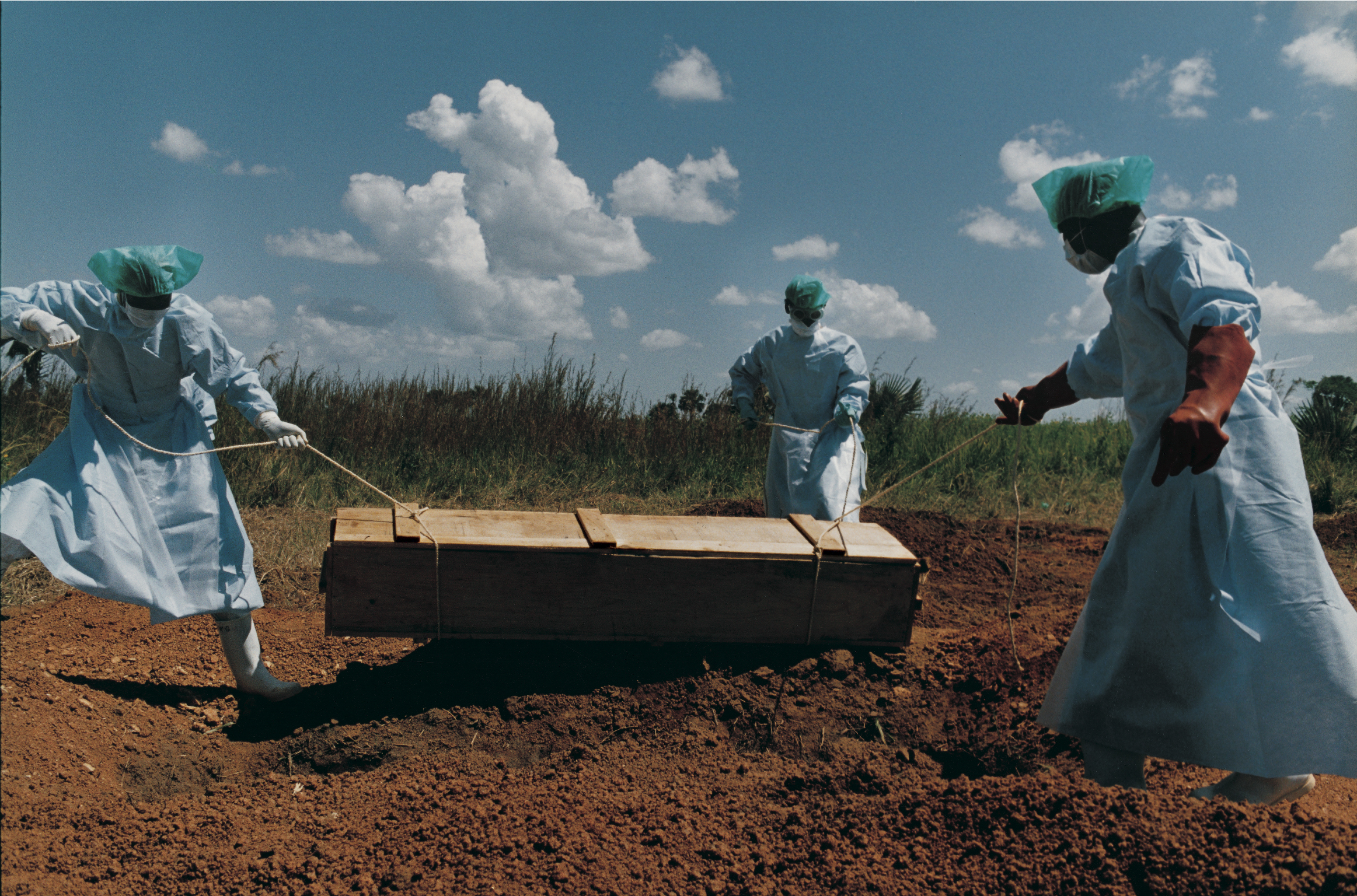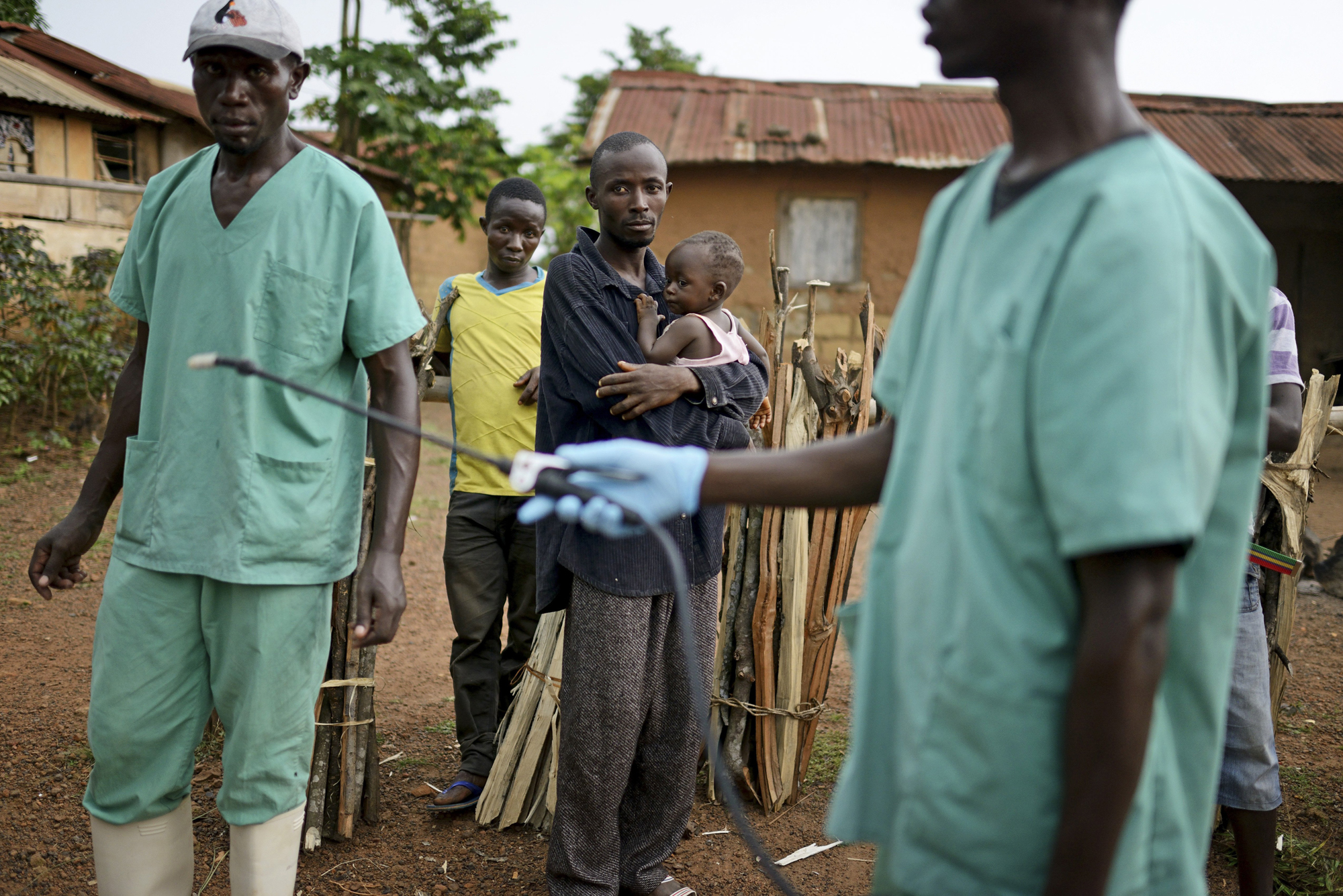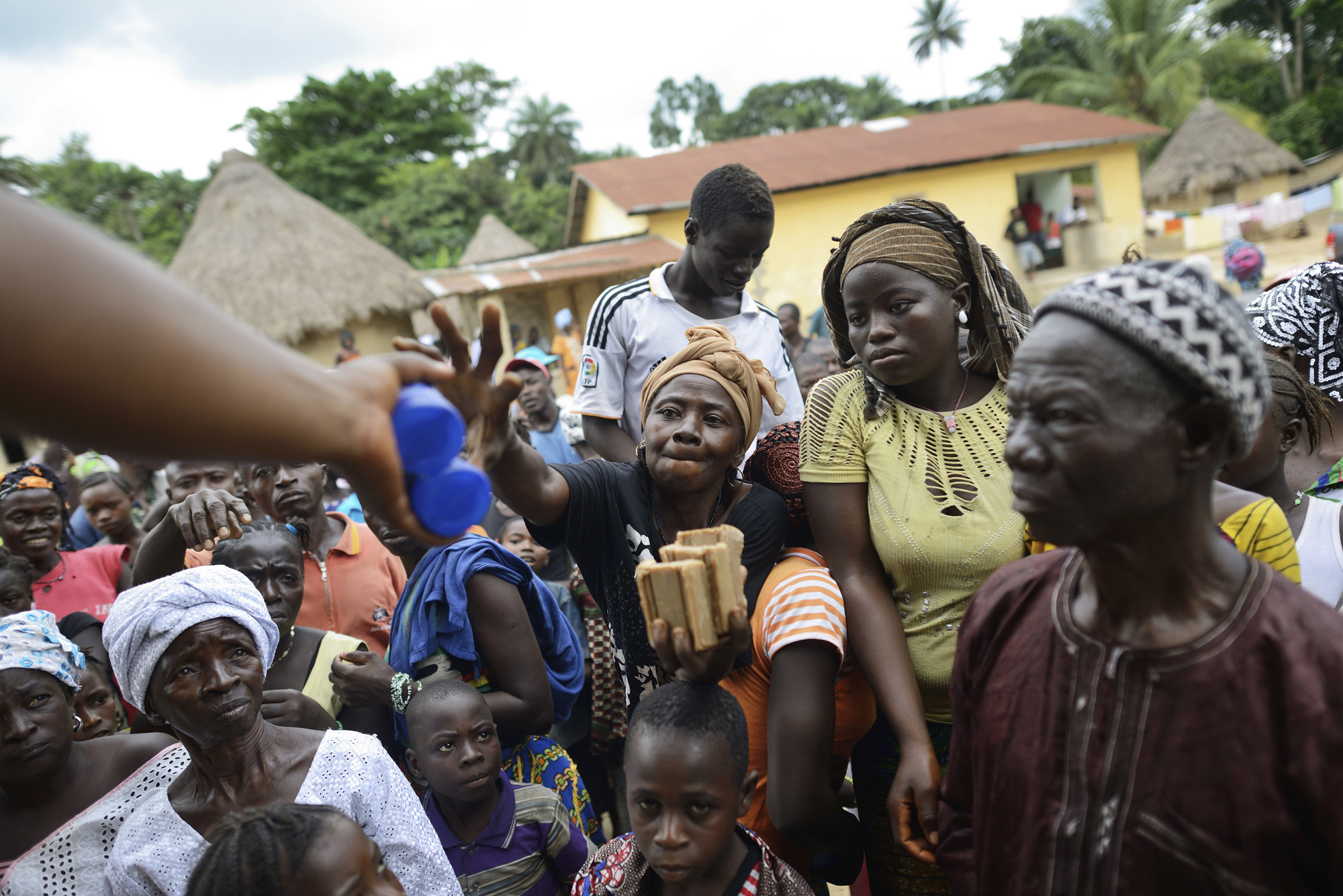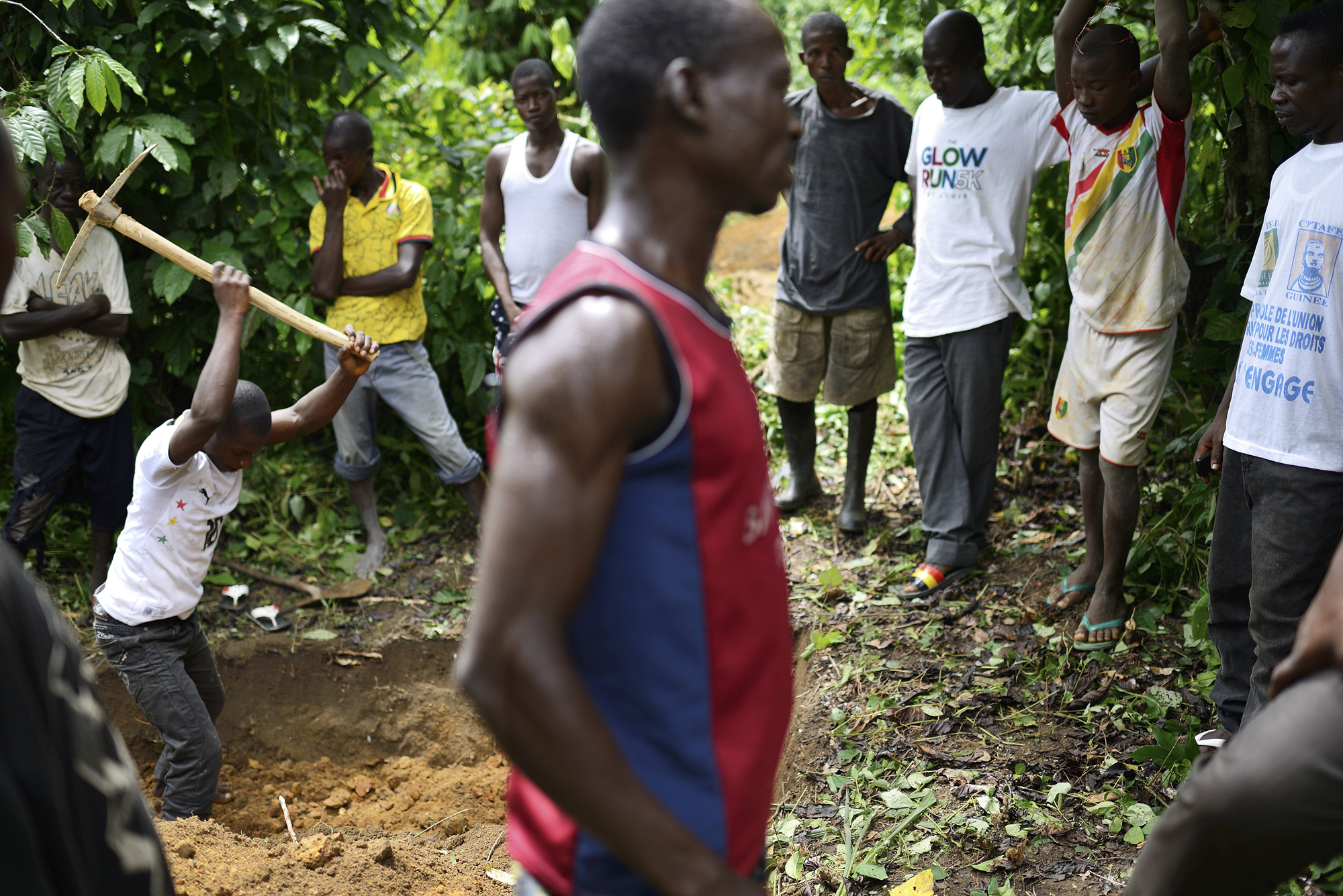
Award-winning photographer Jodi Bieber was, in her own words, “a hungry young photographer with an assignment from the New York Times Magazine” when she covered the 2000 Ebola outbreak in Uganda. Recalling that work, and the experience of chronicling the grim story, the South African photographer recently told LightBox that “fourteen years later, I would say [covering an Ebola outbreak] is no different than playing Russian Roulette with your life.”
First diagnosed in the Democratic Republic of Congo and Sudan in 1976, Ebola is a viral disease with a mortality rate of 90%. Its symptoms include fever, headache and muscle pain, as well as—in the terminal stages—diarrhea, vomiting and internal bleeding.
In the most recent outbreak, which first originated in Guinea last March and has already spread to Liberia, Sierra Leone and Nigeria, more than 670 people have died, according to the World Health Organization. And it shows no sign of slowing down.
“You can’t really control where you are or what to do to avoid getting infected,” says Spanish photographer Samuel Aranda, who was on assignment for the New York Times in Guinea last week. “It was scary, and sad. Now, nobody is shaking hands with each other. You can see the fear in people’s faces.”
While Aranda received the kind of access that allowed him to photograph everything he needed for the Times, some villages remained closed to foreigners. “People are scared of Ebola, and some villagers believe foreigners brought the virus to their territories, so we were not able to enter those villages.”
Aranda did not wear any particular protective gear during the seven days he spent in Guinea, but he received constant advice from Doctors Without Borders’ local teams, which made sure that he cleaned his hands and arms with chlorine regularly. “I was really impressed by the work [these doctors] are doing there,” he tells TIME.
Fourteen years ago, as the Ebola virus killed more than 200 people in Uganda, Jodi Bieber found herself riding with ambulance drivers to document the outbreak. “The World Health Organization had seen its share of unruly television crews and were less than happy to assist in any more coverage,” she told TIME. “I was one of the last photographers on the scene—the majority of the media were leaving when I arrived.”
The ambulance drivers’ job was “to transport the sick and bury the dead,” notes Bieber, who wore surgical plastic gowns, masks, hats, shoes and gloves at all times. Every time she left a contaminated zone, she was sprayed with bleach.
Bieber received a World Press Photo prize for her work, but she also endured the biggest scare of her life. “When I arrived back in South Africa after the assignment, I suddenly fell sick. This is when it became scary,” she remembers. It takes up to 21 days for the Ebola virus to incubate. “Those were the worst 21 days of my life. With Ebola, there’s no turning back. It’s a bitter death, as I saw in Uganda.”
Samuel Aranda is a Spanish freelance photographer represented by Panos Pictures.
Jodi Bieber is an award-winning photographer based in South Africa.
Olivier Laurent is the editor of TIME LightBox. Follow him on Twitter and Instagram @olivierclaurent
Mikko Takkunen is an associate photo editor at TIME.com. Follow him on Twitter @photojournalism.






More Must-Reads from TIME
- Why Trump’s Message Worked on Latino Men
- What Trump’s Win Could Mean for Housing
- The 100 Must-Read Books of 2024
- Sleep Doctors Share the 1 Tip That’s Changed Their Lives
- Column: Let’s Bring Back Romance
- What It’s Like to Have Long COVID As a Kid
- FX’s Say Nothing Is the Must-Watch Political Thriller of 2024
- Merle Bombardieri Is Helping People Make the Baby Decision
Contact us at letters@time.com